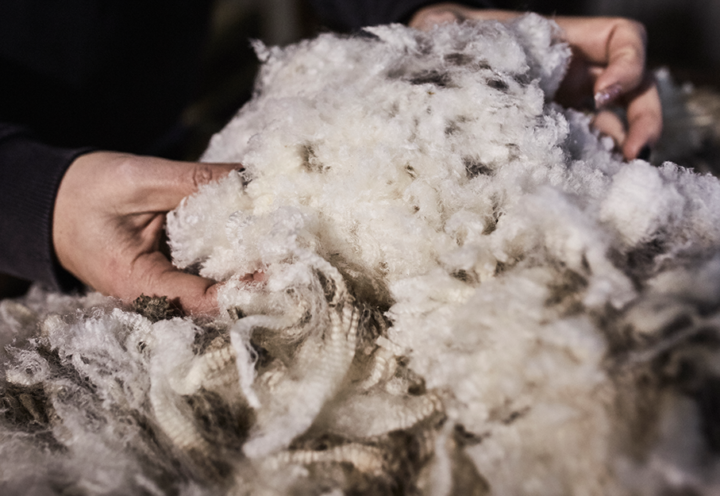Traditional paper is made from wood pulp, and although it’s possible to make paper from other types of plant such as cotton, bamboo and hemp, about 95% of the raw material used to make paper comes from trees. Every ton of paper recycled saves more than 3.3 cubic yards of landfill space. Paper comes in five different grades, which are used to determine how best to recycle it. The grade of paper is determined by its fibre length, which shortens after each trip through the recycling process. After about 7 rounds of recycling, the grade of the paper becomes too low and will need to be mixed with virgin fibres to create a viable product.
Whilst paper is sustainable in that it’s recyclable and widely recycled – the paper packaging products we use to send our products in often aren’t as environmentally friendly as they seem. To increase their durability, they’re often bound with glue, or have a plastic lining, all of which will deem the packages unrecyclable. Paper durability is a common reason manufacturers and brands use plastic packaging in place of paper products – otherwise, the product itself risks damage, the return process of which will only increase the carbon footprint of the product.
What problems does this pose?
Paper is the most recycled material in the world today, and if you measure by weight, more paper is recovered for recycling than plastic, aluminium and glass combined.So, why do we still need to consider its sustainability? Well, our consumption of paper is growing at an exponential rate (400% between and 1971 and 2011). That’s a lot of trees!
It’s estimated that the deforestation necessary for our increasing paper use contributes 12 percent of global greenhouse gas emissions – second only to fossil fuel combustion. When it comes to the practices of our forestry industry, recyclable does not always mean sustainable. Furthermore, we often use far more paper than necessary. Britain’s biggest cardboard packaging provider recently admitted that up to 50% of space in vans delivering their boxes is wasted, as the boxes are much larger than the products they’re delivering. Customers, too, are feeling anxious about this – half of all US consumers in a recent report agreed that retailers need to do a better job of sending items in better sized packaging to reduce waste.
Here are 4 alternatives:
1. Tree-Free Packaging from PaperPlus
Natural, tree-free PaperPlus make their paper from sugarcane. The fibres of the paper are also made from agri-residue such as Bagasse and Wheat Straw, which is usually burnt by farmers. All agricultural waste is given a second life – as even the harvest’s leftover leaves and stems are made into material for paper and paperboard. The end product – called EnvoPap – has saved over 500,000 trees so far. A pallet of 30% recycled paper saves 7 trees, whereas a pallet of EnvoPap saves 24!
2. Durable Paper/Plastic Packaging from Paptic
Whilst paper remains the most sustainable ‘traditional’ packaging option, it’s rarely economic or suitable for retailers to package their products using only paper – it’s simply not durable enough. Finnish company Paptic have recently developed a new material from controlled and sustainable wood-fibre and man-made-fibre that combines the benefits of paper, with the fundamental properties of plastic. It’s sustainable, recyclable, resuable, compostable and – for some most importantly – durable. Soon to be at industrial-scale production levels, Paptic is in high demand by retailers the world over.
3. Customisable Paper Packaging by Flexi-Hex
UK-based Flexi-Hex came about as a sustainable packaging-solution to transport and deliver surfboards; but the company now has its sights on revolutionising the packaging industry across sectors. The honeycomb design of the paper is fully customisable – waste is reduced whilst the product is protected to such an extent that bubble wrap is no longer needed. It’s flexibility also means it can be adapted to package even the most irregular items. Not to mention it’s 100% biodegradable.
4. Functional Packaging from Sappi
Sappi make an extensive range of recyclable, flexible packaging solutions that can protect more vulnerable or volatile items such as beauty products. The paper serves as a barrier against oxygen, water, grease etc; and it’s completely flexible and customisable to reduce waste. Whilst their products aren’t as eco-friendly as other waste-saving offers such as Flexi-Hex, they still have less environmental impact than foils or plastic that are usually used to transport items that need complete barrier-protection.
Whilst paper packaging isn’t as scrutinised for its environmental impact as plastic, it plays a big role in most supply chains and shouldn't be overlooked. As e-commerce and urbanisation grow, so too will the packaging industry. But in which direction?



